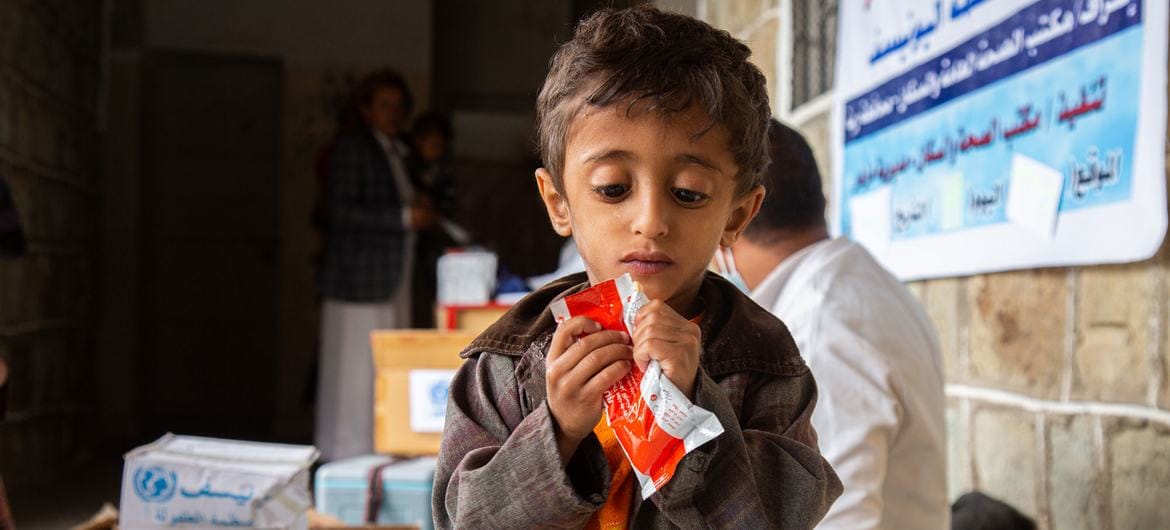
A young malnourished boy in Yemen eats the Ready-to-Use Therapeutic Food (RUTF) (© UNICEF/Anwar Al-Haj)
Last updated on: 26-08-2025 at 8 PM Aden Time
|
|
Aden (South24 Center)
The World Food Programme (WFP) stated on Monday (August 25) that 70% of Yemeni households were unable to obtain sufficient food during July, placing the country among the world's most food-insecure nations.
The program reported that severe food deprivation levels have reached unprecedented levels (44%), with the highest rates recorded in Al-Jawf, Al-Bayda, and Lahj governorates. It added that displaced families and female-headed households have resorted to extreme coping strategies. The WFP projected that by September 2025, populations in Houthi-controlled areas (Sana'a authorities) would enter Phase 5 of the Integrated Food Security Phase Classification (IPC) - the highest level of famine.
The report noted that food and fuel prices reached record levels in July following the collapse of the Yemeni rial in internationally recognized government areas. Although currency improvement due to political measures in early August led to significant price reductions, these declines remained disproportionate to exchange rate gains. The program emphasized that uncertainty persists, linked to the Aden-based Central Bank's ability to sustain its measures.
Fuel imports through Red Sea ports during June and July fell to their lowest levels in three years due to infrastructure damage exceeding $1.3 billion. The WFP warned that this could disrupt milling operations in Houthi-controlled areas and lead to increase in wheat flour prices despite existing restrictions.
According to the report, food imports across all Yemeni ports between January and July 2025 decreased by 4% compared to the same period in 2024, driven by a sharp decline in Houthi-controlled ports which were partially offset by increases in government-held ports.
The WFP indicated that the Food Security and Agriculture Cluster has developed an urgent response plan worth $242 million to assist 8.9 million people across 168 classified hotspot districts, though implementation remains contingent on funding availability.
South24 Center